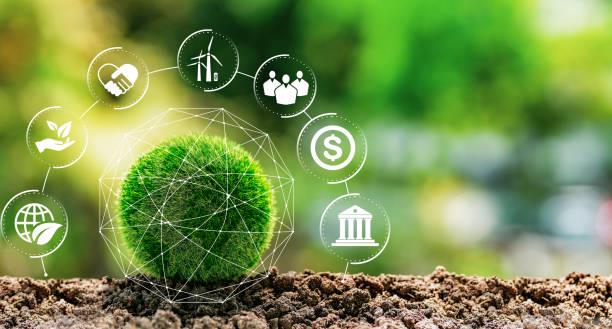Best Practices in the Chemical Industry

Overview
The chemical industry, particularly Small and Medium Chemical Manufacturing Industries, faces significant challenges in managing pollution and optimizing resources. By adopting advanced best practices, businesses can minimize waste, reduce environmental impact, enhance resource efficiency, and ensure compliance with stringent environmental regulations. This section provides an in-depth guide to best practices focused on process optimization, waste management, energy efficiency, water conservation, sustainable supply chains, and safety compliance.
🌱 Advanced Process Optimization for Pollution Prevention:
Process optimization focuses on enhancing the efficiency of chemical reactions, minimizing by-products and reducing pollutant emissions through advanced technologies and practices.
A. Green Chemistry and Sustainable Synthesis:
- Atom Economy: Maximizing the conversion of raw materials into the desired product, minimizing waste.
- E-Factor (Environmental Factor): Aim for a lower E-factor by reducing by-products and waste per kilogram.
1. Atom Economy and E-Factor Reduction:
2. Solvent-Free and Aqueous Phase Reactions:
- Replace traditional batch processes with continuous flow reactors for better control over reaction conditions.
- Benefits: Lower energy consumption, reduced waste and safer handling of hazardous intermediates.
3. Flow Chemistry:
B. Advanced Process Control (APC):
A. Green Chemistry and Sustainable Synthesis:
- Implement DCS for real-time monitoring and control of chemical processes.
- Key Features:Feedback control loops, alarm systems and remote monitoring.
1. Distributed Control Systems (DCS):
2. Process Intensification:
- Optimize heat recovery and energy consumption through pinch analysis techniques.
- Tip: Integrate waste heat recovery systems for energy-intensive processes.
3. Pinch Analysis for Energy Integration:
♻️ Advanced Waste Management and Minimization:
Efficient waste management is essential to reduce environmental impact and comply with regulatory standards. This includes segregation, treatment, recycling, and zero-waste strategies.
A. Hazardous Waste Management:
- Maintain an updated inventory of hazardous chemicals as per the Hazardous and Other Wastes Rules, 2016.
- Tip: Label and categorize waste based on ignitability, corrosivity, reactivity and toxicity.
1. Classification and Inventory Management:
- Maintain an updated inventory of hazardous chemicals as per the Hazardous and Other Wastes Rules, 2016.
- Tip: Label and categorize waste based on ignitability, corrosivity, reactivity and toxicity.
2. In-Situ and On-Site Treatment Technologies:
- For non-recyclable hazardous waste, use high-temperature incineration to minimize landfill disposal.
- Compliance: Adhere to emission standards for dioxins and furans.
3. Incineration and Plasma Gasification:
B. Resource Recovery and Circular Economy:
- Utilize waste from one process as raw material for another.
- Example: Use calcium fluoride waste in cement manufacturing.
1. By-product Synergy and Co-processing:
- Install distillation columns and adsorption systems for solvent recovery and reuse.
- Efficiency: Aim for a recovery rate above 90%.
2. Solvent Recovery Systems:
- Implement multi-effect evaporators, crystallizers, and RO systems to ensure zero discharge of effluents.
- Key Practice: Reuse recovered salts and water within the process.
3. Zero Liquid Discharge (ZLD) Systems:
⚡Advanced Energy Efficiency Practices:
Adopting energy-efficient technologies reduces operational costs and minimizes greenhouse gas emissions.
A. Energy Recovery and Cogeneration:
- Install CHP systems to simultaneously generate electricity and process heat.
- Efficiency: Can achieve efficiencies of 75% or more compared to separate heat and power generation.
1. Combined Heat and Power (CHP) Systems:
- Capture and reuse heat from flue gases to preheat feedstock or generate steam.
- Tip: Use economizers and heat recovery steam generators (HRSG).
2. Waste Heat Recovery Boilers:
- Regular inspection and maintenance of steam traps to prevent energy losses.
- Monitoring: Use ultrasonic leak detectors.
3. Steam Trap Management:
B. Energy Recovery and Cogeneration:
- Utilize agricultural waste and by-products for bioenergy production.
- Compliance: Ensure emission controls for particulate matter and NOx.
1. Biomass Gasification:
- Install solar concentrators for process heating requirements.
- Tip: Combine with thermal storage systems for continuous operation.
2. Solar Thermal Systems:
💧 Advanced Water Conservation Practices:
Effective water management includes reduction, recycling, and efficient treatment.
A. Water Pinch Analysis:
- Conduct pinch analysis to minimize freshwater intake and maximize recycling.
- Tools: Use WaterCAD and AquaChem for analysis.
1. Water Network Optimization:
- Membrane Bioreactors (MBR):: biological treatment with membrane filtration for high-quality effluent.
- Ultrafiltration (UF) and Nanofiltration (NF): For selective separation of contaminants.
2. Advanced Filtration Techniques:
B. Smart Irrigation and Cooling Systems:
- Replace wet cooling towers with air-cooled condensers to reduce water evaporation losses.
1. Dry Cooling Towers:
- For captive plantations and green belts around chemical plants.
2. Drip and Micro-Irrigation:
🏞 Sustainable Supply Chain and Green Logistics:
- Conduct audits and assessments to ensure suppliers adhere to environmental standards.
- Criteria: ISO 14001 certification and waste management practices.
1. Supplier Sustainability Assessment:
- Optimize routes, use energy-efficient transport, and adopt low-emission vehicles.
- Technology: Implement IoT and GPS for real-time tracking and optimization.
2. Green Logistics:
🛠 Safety Compliance and Risk Management:
- Evaluate multiple layers of protection to mitigate risks.
- Tip: Integrate LOPA with HAZOP studies.
1. Layer of Protection Analysis (LOPA):
- Use SCADA and DCS for automated safety interlocks and real-time monitoring.
2. Digital Safety Systems:
🚀 Conclusion:
By adopting these advanced best practices for pollution prevention and resource optimization, Small and Medium Chemical Manufacturing Industries can enhance compliance, reduce operational costs, and build a sustainable business model. Prioritizing process efficiency, waste minimization, and sustainable resource use will ensure long-term competitiveness and environmental stewardship.
